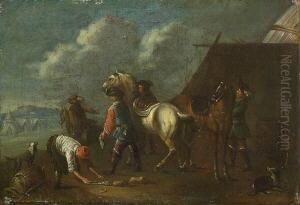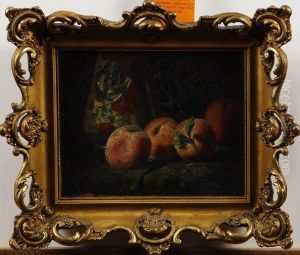Jakob Jung Paintings
Jakob Jung was a relatively obscure painter whose life and works have not been extensively documented in the annals of art history. Born in 1585, likely in the Holy Roman Empire, Jung's background, education, and artistic training remain largely unknown to modern scholars. This lack of detailed historical records is not uncommon for artists from this period, especially those who did not achieve widespread fame or were not associated with major artistic movements or courts.
What is known about Jung is that he was active during the early 17th century, a time when European art was transitioning from the Mannerist style to the more naturalistic approach of the Baroque. While details about his patrons, preferred subjects, or specific works are scarce, it is possible that he worked on religious and secular commissions like many artists of his time.
Jung's career would have unfolded against the backdrop of significant historical events such as the Thirty Years' War (1618-1648), which ravaged much of Central Europe, including the Holy Roman Empire. This tumultuous period would have impacted the artistic production and the availability of patronage, affecting artists like Jung.
He is believed to have died in 1636, in the midst of the Thirty Years' War, which could explain the further loss of records or artworks that might have been attributed to him. Due to the limited information, Jakob Jung is a figure who represents the many lesser-known artists of his era, whose contributions to the art world may have been significant but remain unrecognized or lost to history.

